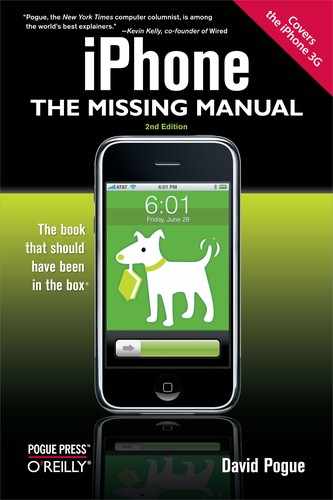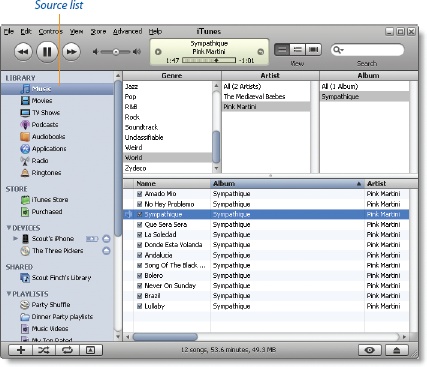Just in case you're one of the six people out there who've never heard of it, iTunes is Apple's multifunction, multimedia jukebox software. It's been loading music onto iPods since the turn of the 21st century. And without it, you won't get very far with your iPhone.
Most people use iTunes to manipulate their digital movies, photos, and music, from converting songs off a CD into iPhone-ready music files to buying songs, audio books, and video online.
But as an iPhone owner, you need iTunes even more urgently, because it's how you get music, videos, email, addresses, appointments, ringtones, and other stuff onto the phone. It also backs up your iPhone automatically.
If you already have a copy of iTunes on your Mac or PC, you may have encountered a warning that iTunes wants to update itself to version 7.7 (or later). With a click on the OK button, you can download and install that version. And you should; the iPhone 3G doesn't work with earlier versions.
If you've never had any version of iTunes, fire up your Web browser and go towww.apple.com/itunes/download. Once the file lands on your computer, double-click the installer icon and follow the instructions onscreen to add iTunes to your life.
This chapter give you a crash course in iTunes. The next chapter covers syncing it with your iPhone.
Here's a quick tour of the main iTunes window and what all its parts do.
The Source panel at the left side lists all the audio and video sources you can tap into at the moment. Clicking a name in the Source list makes the main song-list area change accordingly, like so:
Library. Click this icon to see the contents of all your different collections. As you add movies, App Store downloads, music, podcasts, ringtones, and other stuff to iTunes, subheadings appear under the Library heading (like Music, TV Shows, Podcasts, Ringtones, and so on). Click one to see what audio, video, or software your computer has in that category.
Store. Click the icons to shop for new stuff in the iTunes Store (music, movies, TV shows, free podcasts, ringtone snippets to customize your callers) or see the list of things you've already bought.
Devices. If there's a CD in the computer's drive, it shows up under this heading. Click it to see, and play, the songs on it. If there's an iPod or iPhone connected to the computer, its icon shows up here, too, so you can see what's on it. If you have an Apple TV, it hangs out here, too.
Shared. This list lets you browse the music libraries of other iTunes addicts on your network and play their music on your own computer. (Yes, it's legal.)
Playlists. Playlists are lists of songs that you assemble yourself, mixing and matching music from different CDs and other sources as you see fit (Playlists). Here's where you see them listed.
Here's the basic rule of using iTunes: Click one of these headings in the Source list to reveal what's in that source. The contents appear in the center part of the iTunes window.
The playback and volume controls, which work just as they do on the iPhone, are at the top left corner of iTunes. At the upper-right corner is a Search box that lets you pluck one track out of a haystack. Next to it, you'll find handy buttons to change views within the window. (Cover Flow, which works just as it does on the iPhone, is the third button in this grouping.)

